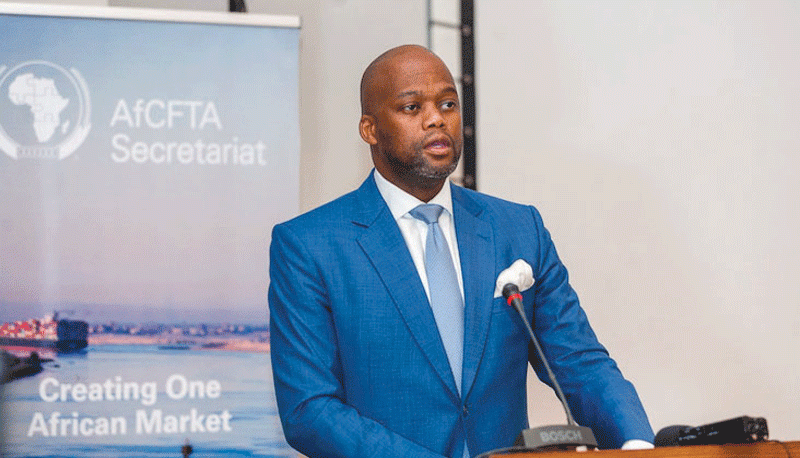
IF its ambitions are achieved, the African Continental Free Trade Area (AfCFTA) might bring significant poverty reduction to the continent than previously predicted.
This will make it a game-changer for Africa’s economic progress.
According to the World Bank (WB), if implemented, AfCFTA could improve incomes by 9% by 2035 and elevate 50 million people out of extreme poverty.
AfCFTA creates a continent-wide market encompassing 54 countries with 1,3 billion people and a combined gross domestic product (GDP) of US$3,4 trillion.
Its first phase, which began in January 2021, would gradually eliminate tariffs on 90% of commodities and lower trade barriers. According to a WB analysis published in 2020, this may improve the region’s income by 7%, or US$450 billion by 2035, reducing the number of people living in extreme poverty.
African governments should work to increase public support for AfCFTA and assist businesses in taking advantage of its provisions.
Policies for social safety nets should be implemented.
If AfCFTA targets are met, real incomes will climb by 9%.
- Why Maser CEO Suri thinks AfCFTA is a winner for start-ups
- AfCFTA bolsters Zim SMEs
- Outcry over state of Binga-Dete road
- Why Maser CEO Suri thinks AfCFTA is a winner for start-ups
Keep Reading
Africa’s exports to the rest of the world would increase by 32% by 2035, while intra-African exports would increase by 110%, underpinned by manufactured goods.
According to the Common Market for Eastern and Southern Africa (Comesa), the implementation of regional and continental free trade regimes will reposition Africa’s economic communities.
Addressing the 38th meeting of Comesa trade and customs experts on November 7 2022, Kipyego Cheluget, assistant secretary general of Comesa said: “The existing regional economic communities (RECs) are the natural building blocks of the larger AfCFTA trading arrangement. We need to double our efforts to complete the ratification process”.
He urged that the remaining Tripartite Free Trade Area (TFTA) processes draw lessons from AfCFTA, particularly measures adopted to support its speedy ratification and entry into effect.
AfCFTA will rely on several measures now employed by many free trade zones to attain these objectives.
The principles of origin, intra-African investments and competition policies are examples of such instruments. Some of these instruments are already in use in specific regional free trade zones across the continent, the RECs.
Many African countries already had free trade zones, thanks to eight official RECs.
The Economic Community of West African States (Ecowas) is regarded as one of the most vibrant.
As a result, the overlapping of AfCFTA and Ecowas, as well and the existence of the West African free trade zone, are concerns raised by AfCFTA as hurdles during implementation.
The action plan for boosting intra-Africa trade, as endorsed by the African Union (AU) includes seven major clusters, the implementation of whose programmes is aimed at addressing the key constraints and challenges of intra-African trade, thereby significantly increasing the size and benefits of trade.
Trade policy, trade facilitation, productive capacity, trade-related infrastructure, trade finance, trade information and factor market integration are the clusters covered.
Zimbabwe is anticipated to be among the second batch of countries to begin substantive intra-Africa commerce under the African continental free commerce agreement’s Guided Trade Initiative (GTI), which has been successfully implemented by seven AfCFTA member countries since October last year.
Trading under the AfCFTA favourable regime became a reality on October 7 last year, with the implementation of the AfCFTA secretariat-driven GTI.
AfCFTA aspires to abolish trade barriers and increase intra-Africa trade as part of its mandate.
Its primary goal is to promote commerce in value-added products across the African economy’s whole service sector.
Wamkele Mene, secretary-general of the AfCFTA, told a Zimbabwe-Ghana business forum in March that the GTI initiative had undoubtedly been an important development at the continental level, injecting some vigour into AfCFTA’s implementation.
The AfCFTA GTI aspires to achieve its goal by connecting interested state parties’ firms and products for export and import in collaboration with their national AfCFTA implementation committees.
“The state parties piloting the initiative, namely Cameroon, Egypt, Ghana, Kenya, Mauritius, Rwanda and Tanzania, have approved 96 products to be traded duty-free and quote-free under the initiative,” Mene said.
“This first batch of countries had their tariff offers on goods fully approved and officially published, ensuring representation from all five regions of the continent.”











